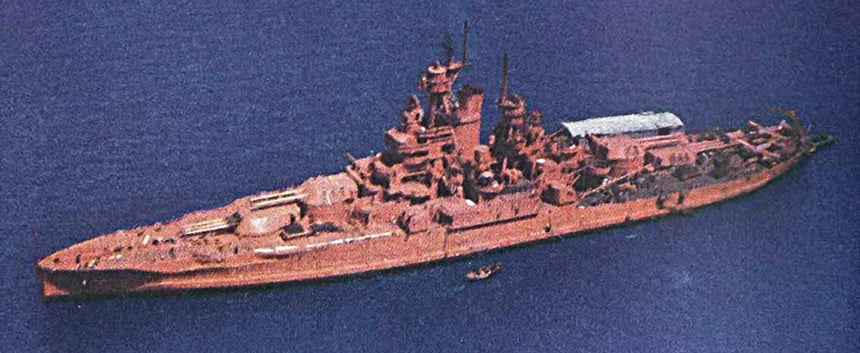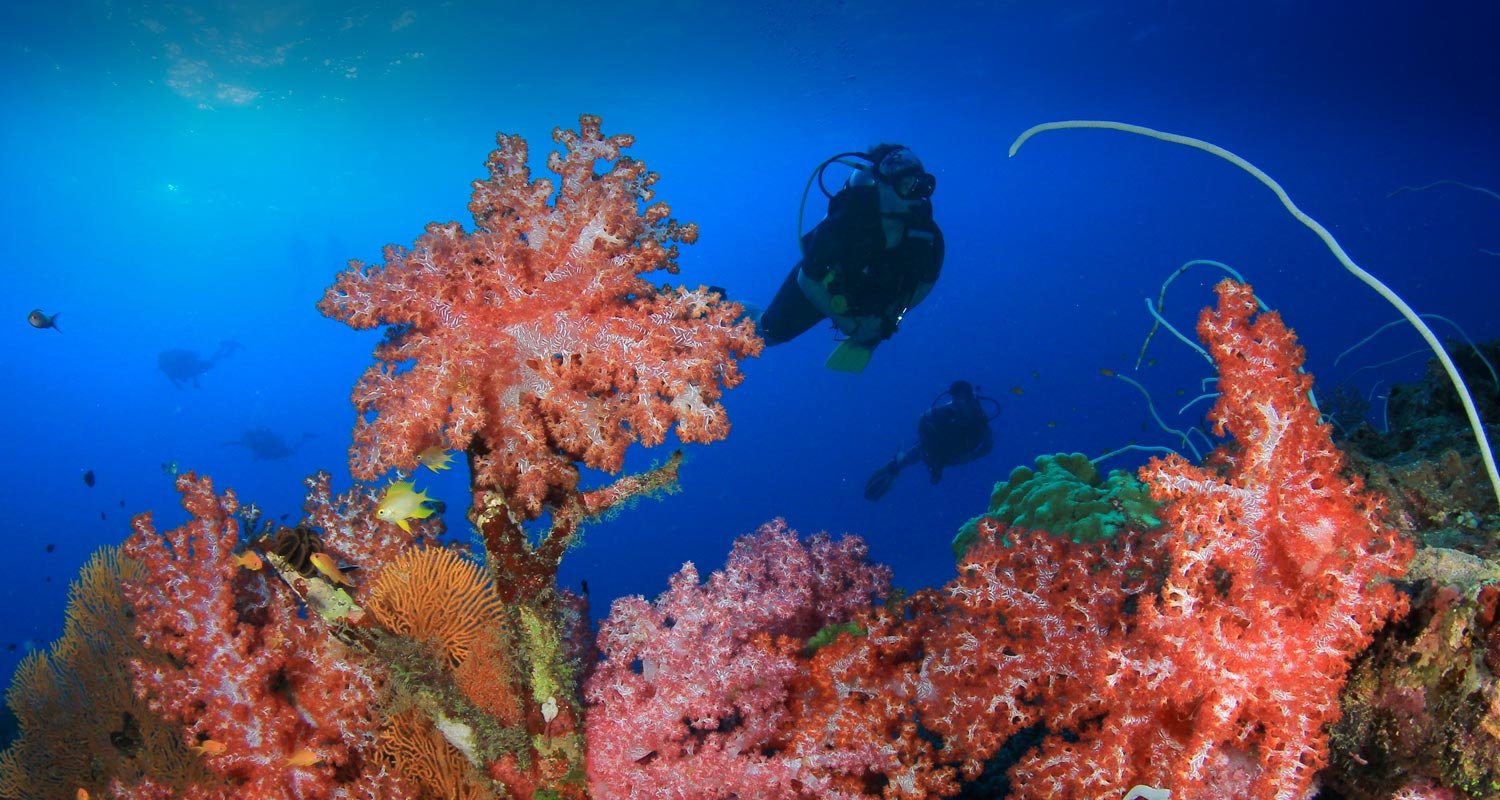It had been less than a year since nuclear testing on a naval fleet had first been suggested. In that time, the population of Bikini Atoll was cleared and ninety four vessels were now moored in the lagoon. Some 40,000 personal moved into the area and the world was ready for Operation Crossroads to begin. It was time for the Able test.
Testing Begins
On 1st July, a B-29 Superfortress, “Dave’s Dream”, left Kwajalein airfield and arrived over Bikini Atoll a little after 8.00am. She wasn’t the only aircraft in the vicinity. In fact, you may be surprised to know that there were more than 80 aircraft in the air at the time. Some were for support, some for documenting the event, some for carrying VIP’s. But only Dave’s Dream was carrying the “Fat Man” nuclear weapon “Gilda“.

This wasn’t Dave’s Dream‘s only involvement in nuclear weapons use. The previous year, under it’s previous name “Big Stink“, it was the designated camera ship to film the bombing of Nagasaki. This time though, she was the centre of attention. After several practice runs, at a few seconds before 9.00am, “Gilda” was released from 28,000 feet (8,530m). After 48 seconds she detonated 520 feet (158m) above the target fleet, with a yield of 23 kilotons.
The Blast
The stated target for the first test was USS Nevada. The conditions were clear and she was clearly marked with a coat of bright orange paint. To help further, a bright light was shining from her deck. Somehow though, most likely because the Fat Boy design was notoriously unstable in flight, Gilda was significantly wide of her target. The official report states 1,500-2,000 feet (457-61m) to the west.

Able was designed as an air burst test, similar to the bombings in Hiroshima and Nagasaki (though at a lower altitude). This means the bomb would detonate high enough in the air to prevent surface materials from being drawn into the fireball. The radioactive fission products rose into the stratosphere and became part of the global, rather than the local, environment.
In the early part of the explosion, there was an intense transitory burst of fireball radiation. Many of the closer ships received doses of neutron and gamma radiation that would have been lethal to anyone on the ship. However, the ships themselves did not actually become radioactive.

The explosion, though off target, also caused less damage than expected. Only five ships sank. The transports Gilliam and Carlisle sank immediately, followed a few hours later by the destroyers Lamson and Anderson. The following day a Japanese cruiser, Sakawa, also sank to the bottom of the lagoon.
The Consequences of the Able Test
There was much hype surrounding Operation Crossroads. For various reasons, it seems that expectations weren’t met. Goggles provided to watch the blast were described by many too dark. Observers were also 15 miles away and more, making the blast seem a little small. Add to this the fact that very few ships actually went down and the press were not exactly over the moon with excitement. But that doesn’t tell the real story.

Personnel began moving into the target area only two hours after the blast. Within a day, crews boarded almost all surviving ships for inspection and to begin preparations for the second test. They were also retrieving testing equipment so that measurements could be collated. The official report states that six ships were seriously damaged, while 8 more suffered seriously impaired efficiency. In fact, as the air force pointed out, around 40 vessels would have been put out of action in a real world scenario.
While the different branches of the armed forces were busy trying to score points, the reality for any crew that would have been aboard could not be ignored. Animals used in the Able Test told their own story. 57 guinea pigs, 109 mice, 146 pigs, 176 goats, and 3,030 white rats were placed around the fleet in stations normally occupied by people. 35% of the animals died, or were euthanised, in the three months following the explosion. Another 10% were killed by the air blast and another 15% were killed by initial radiation. Regardless of how badly the ships were damaged, it was clear that they could not have been operated after the event.
USS Nevada – The Target
As the official target in the Able Test, USS Nevada was loaded with animals and recording equipment. As she didn’t sink, she told a very clear story. Goat #119, tethered inside a gun turret and shielded by armor plate, received enough radiation to die of radiation sickness, four days after the test. This was two days longer than than goat #53, which was on the deck, unshielded. Every unprotected location on the ship received around 10,000 rems (100 Sv) of initial nuclear radiation from the fireball. anyone deep enough inside the ship to experience a 90% radiation reduction would still have received a lethal dose of 1,000 rems.
The assessment of the Bulletin of the Atomic Scientists was pretty clear.
“…a large ship, about a mile away from the explosion, would escape sinking, but the crew would be killed by the deadly burst of radiations from the bomb, and only a ghost ship would remain, floating unattended in the vast waters of the ocean.”
And so began twelve years of concerted nuclear weapons testing. Between 1946 and 1958 the US military would carry out twenty two more nuclear tests at Bikini Atoll. The Marshall Islands as a whole would see sixty seven tests in total.
This Little Piggy Went To The Able Test
One of the most famous characters to come out of Operation crossroads was one of it’s test subjects. Pig #311. There has been much discussion over the years as to the full story, but #311 was locked in the officers’ bathroom on the Japanese light cruiser Sakawa. As you may remember, Sakawa went down the day after the test…but #311 was not aboard. She was found casually paddling in the lagoon and was recovered for examination. It seems that she was not exactly happy about the situation and had a low blood count, but otherwise seemed quite healthy. Within a month she was fully recovered and returned to the US where she was poked and prodded for several years by the Navy.

In 1949, after what is likely as thorough testing as any pig is likely to have ever been through, #311 was released to Washington’s National Zoological Park. She had expanded somewhat from her relatively svelte 50lb (22kg) to a rather portly 600lb (272kg). But, she lived her remaining year or so in relative comfort and luxury.
Click here to read more about the 75 anniversary of Operation Crossroads or the follow up Baker Test. Alternatively, to book your space to see the nuclear fleet, head to our Bikini Atoll page.



